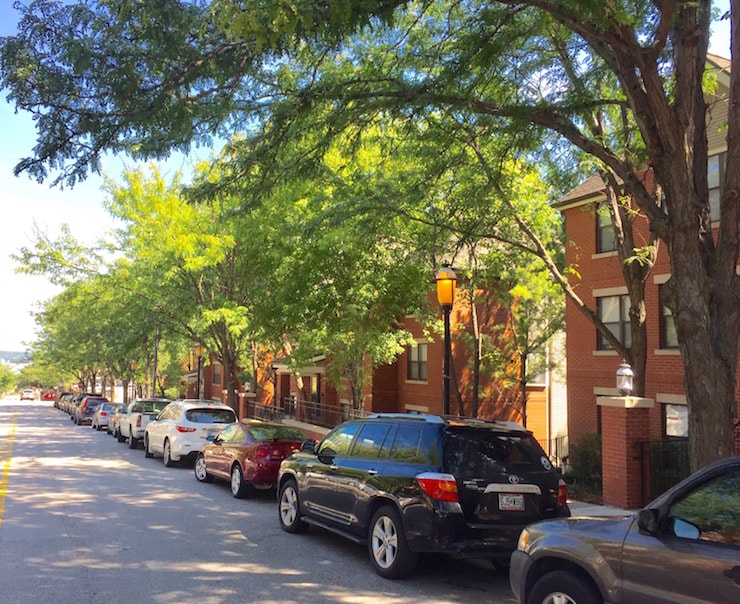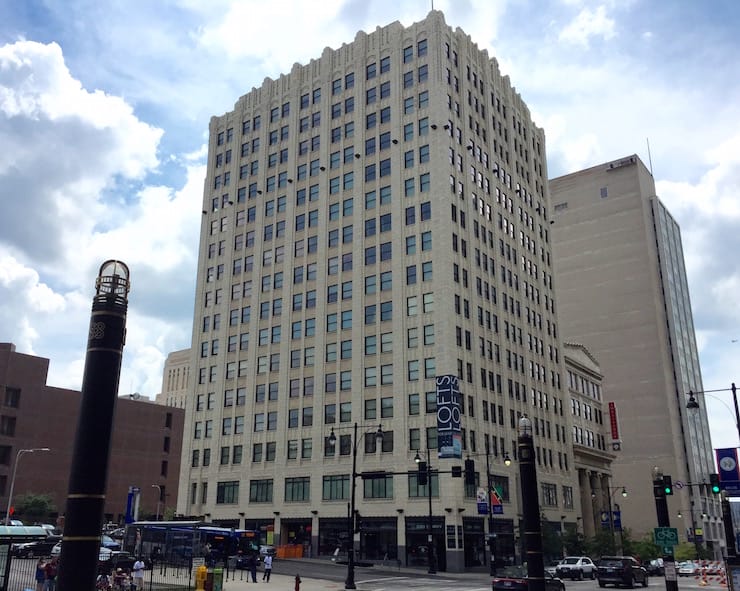Mending Our Broken Heart: Downtown Revival Hinges on Housing (Part 2)

Published September 27th, 2022 at 11:30 AM
“Downtown KC: Mending Our Broken Heart,” was a groundbreaking series originally published by The Kansas City Star 20 years ago this month.
It was written by former staffers Jeffrey Spivak, Kevin Collison and Steve Paul, with photographs by Rich Suggs. It was edited by former deputy national editor Keith Chrostowski.
CityScene KC thanks The Kansas City Star and Mike Fannin, its president and editor, for granting permission to republish this report.
While The Star retained the text of “Mending Our Broken Heart,” the original photos and graphics were unavailable. Photos of that missing material from a reprint of the series were used as much as possible.
Another (downtown living) trend involves urban and suburban portrayals in popular culture.
Movies like “American Beauty” increasingly roast suburban life, while popular TV sitcoms like “Seinfeld,” “Friends,” “Frasier” and “Sex and the City” feature downtown-like apartments with eclectic eateries and hangouts nearby.
Kansas City is certainly no New York City, but that kind of aura is part of the reason Jason and Sandra Martinek chose a downtown loft here with picture-window views of the Garment District’s ornamental brick buildings. They were drawn to things the suburbs couldn’t offer – the historic charm, the walkable streetscape, the architecture.
“I wanted a place where there’s a lot of character,” Jason Martinek says.
Finally, one other trend offering opportunity for downtowns has to do with demographics. As the faces of the nation are changing, so are the faces of downtown.
While the number of minorities has grown nationwide, the number of African-Americans living in downtown Kansas City has almost doubled in the past two decades, and the number of Hispanics is up almost 50 percent.
Also, baby boomers are entering their senior years. In 2000, 23 million Americans were ages 55 to 64, but a decade from now that age group will swell to about 35 million. Many will be empty nesters who no longer have to worry about children’s schools and who no longer want to worry about things like yards or roofs. Various national surveys show that a third of people ages 55 to 64 prefer city living.
“They’ve lived in the ‘burbs, but they don’t want to die in the ‘burbs,” says Kansas City downtown loft developer Dana Gibson.
Already, three-fourths of the people walking into the new Richards & Conover Lofts leasing office are empty nesters. And this year’s downtown homes tour drew high numbers of curious middle-age couples like Drew and Carol Kingery.
The Kingerys left their dog at home and trekked down from the Northland. They walked from building to building in the Garment District, checking out the red brick walls, white carpeting and exposed silver ductwork, and contemplating what retirement would be like downtown.
“It’s kind of cool,” Carol Kingery says. “I’d say in retirement I’d want to move downtown.
“I just think it’s missing something. When you see the skyline, it looks really neat. It just seems like it could be more vibrant. More things to do, more options.”

Quality Hill developed as a downtown neighborhood in the 1980s.
It’s hard to predict how many aging boomers or young singles would choose downtown living, but consider this: A Downtown Council survey a few years ago determined that as many as 8,400 downtown workers wanted to move downtown but couldn’t because of limited housing. And when a poll done for The Star asked 608 area residents about living downtown, 11 percent indicated they would consider living there now.
Such surveys indicate enough interest to more than double downtown’s population. And, in fact, Kansas City’s downtown housing market already is heating up.
After just eight units opened in downtown Kansas City during a four-year period of the early 1990s, almost 1,000 apartments and condos have opened in the last four years. About 1,300 more units are under construction or on the drawing board, and developers are eyeing the twin-spired skyscraper at 911 Walnut or even under-used parts of Penn Valley Park.
“We have some of the best suburbs in the country. What we need is a stronger urban environment to balance that for the people who want it,” says Vicki Noteis, Kansas City government’s planning director. “The key to downtown housing is its role as an eclectic choice.”
Appealing to City Hall
Minneapolis’ downtown has almost 18,000 residents. Indianapolis’ has almost 14,000. Kansas City Consensus, the local public policy group, studied big cities and found that those with “soul,” where people worked and played almost around the clock, all had at least twice as many residents as Kansas City’s downtown.
For our downtown to reach that point, it’ll take more than just a convergence of trends. Based on experiences in other cities, it’ll take more help from city and civic leaders.
Downtown housing in Kansas City has gained some momentum without much public-sector help. Imagine if City Hall got as motivated as governments have in some of Kansas City’s peer cities.
The Downtown Council here is lobbying for exactly that.
“The city needs to become more directly involved so downtown can continue to grow,” the group recommended in a report this year to the mayor and City Council.
One way the Downtown Council wants the city to help is by offsetting downtown’s high costs of redevelopment, which are typically due to land prices and parking expenses.
The city government could go so far as to free up developable sites, such as parts of Penn Valley Park. Or it could start a loan program that focuses on downtown. Louisville’s city government did that. So did Denver’s. Columbus, Ohio, has made it part of a new downtown strategy.
Such subsidies could attract more development interest, beyond the tax breaks available from the city, the state and the feds. This also could result in lower housing prices, which would expand downtown’s population by expanding its market beyond just high-end housing.
There’s certainly demand for that. Sarah Bent and her husband lived downtown and looked for a place to buy there. But they found no condos in a price range akin to starter homes. So they moved away from downtown.
“The problem is the residential development downtown is all geared toward luxury or upscale, which of course limits who will live downtown,” Bent says. “I will miss the wonderful view we had, high above the river and the downtown airport.”
Another way the Downtown Council wants the city to help is by reducing red tape in the building codes department.

The 132-unit Professional Building Lofts was redeveloped with the help of state affordable housing tax credits in 2006.
Every downtown housing developer interviewed by The Star complains about obtaining approval for a rehab plan from the codes department, then being ambushed by a codes inspector who decides that doors, stairs or something else built according to the approved plan is not right and has to be ripped out.
“If you get a stamped set of plans and every page is approved for construction, you ought to have a reasonable expectation that you can do what’s on the plans,” says downtown developer George Birt. “You shouldn’t have to be going through all this.”
Mayor Kay Barnes is pledging to help. Recently, she assigned the issue to her Service First program, a trouble-shooting initiative that brings department heads together weekly to iron out specific problems.
“I want City Hall to be part of the answer instead of part of the problem,” the mayor says. “I will continue to push for resolution of those issues that get in the way of that.”
Still, those who want downtown to come alive again say more needs to happen. Downtown needs to be cleaned up, to polish its appearance. And it needs more attractions, to become more of an entertainment center.
But all see downtown housing as a glowing ember. It just needs some gusts of air to burst into flames.
“It’s achievable. It can be done,” says downtown developer Tom Trabon. “Residential development means life for downtown. It has meant life for other cities, and it will mean life here.”
The poll
As part of the reporting for this series, The Star conducted a poll of area residents to gauge their feelings about downtown. Here are some of the responses as they relate to housing. More from the poll can also be found at www.kansascity.com.
What does downtown need?
1. More housing such as apartments and condominums?
Yes: 51%
No: 49%
Poll respondents are lukewarm on this strategy, a position at odds with many experts who believe housing is the key to downtown revival. Men are more likely than women to support more downtown housing, 57.3 percent vs. 44.4 percent.
2. Something done with vacant buildings?
Yes: 98%
No: 2%
3. Should downtown still be a retail center for the city or metropolitan area?
Yes: 78%
No: 22%
Again, the opinion of poll respondentsis at odds with experts who believe that even under the best scenario, downtown will not regain its role as a major retail center. Minority respondents were even more vocal in their support for retail with 93 percent saying yes.
4. Do you think downtown should build on the momentum of loft apartment construction and concentrate more on adding housing?
Yes: 48%
No: 52%
Age groups responded differently: 50.6 percent of people over the age of 55 endorsed the idea but just 41.7 percent of those ages 18 to 34 did.
5. Would you consider living downtown as it is now?
Yes: 11%
No: 89%
Some groups were slightly more receptive than others: the percentage of male respondents saying yes was 15 percent vs. 6.2 percent of the women, and people 18 to 34 were more favorable than those older than 55, 19.1 percent vs. 6.9 percent.
6. If downtown were revitalized, would you ever consider living there?
Yes: 45%
No: 55%
Answering yes was a majority of single people, 60.2 percent; people 18 to 34, 61.7 percent; people without children at home, 55 percent; those earning less than $50,000, 56.2 percent; and minorities, 65.1 percent.
The groups most against the idea? Married respondents, 64.6 percent, and those earning more than $50,000, 60.5 percent.
When looking at the poll results in total, the margin of error, at a 96 percent confidence level, is plus or minus 4 percentage points. That means that if this study had been repeated under the same circumstances 100 times, the results for each question would not vary by more than 4 percentage points in 96 of the 100 times the study was conducted.


